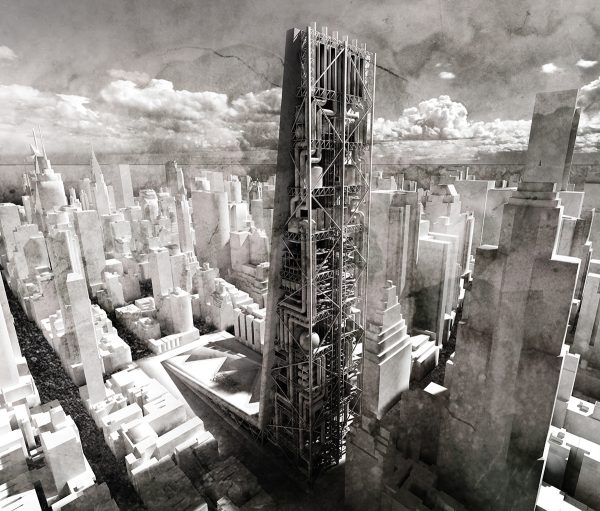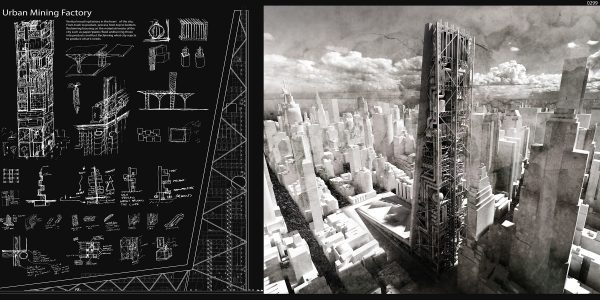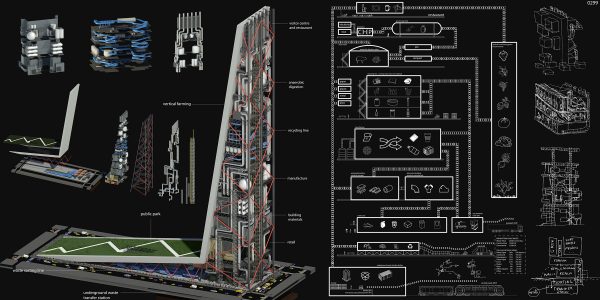Honorable Mention
2017 Skyscraper Competition
Maciej Kasperek
United Kingdom
New York, the densest and largest city in the World, is also widely reported to be the most wasteful in terms of garbage, water use and energy. It generates 14 million tonnes of waste each year and spends $2.3 billion per year disposing it off. Until 2001 nearly all of NYC waste ended up in landfill in the borough of Staten Island. Since its closure the garbage is transported to landfills elsewhere. This approach is only diverting the problem and fails to recognize that the reason for excessive amount of waste is not only the sheer size of the city but is mostly a result of consumer-throwaway culture. The magnitude of this manifestation of wastefulness is amplified with the density. Manhattan, the densest county in America, generates 2400 tonnes of waste alone every day.
There is a constant flow of products into the busy city centre and at the same time a flow of waste going out. This waste is scarcely recycled due to lack of public recycling facilities and either ends up in landfill or if recycled, the raw material, goes as far as China to be used in manufacture again. This results in pollution due to transport. This consumerism and wastefulness cycle continues on a global scale.
Urban Mining Factory is a vertical recycling factory in the heart of the city. A factory which turns trash to product. Process is focused on the materials and waste of the city such as paper, plastic or food and turning those into products and fuel that the city needs.
The essence of the project is to create closed loop cycle for as many materials-products as possible. The tower focuses on the things that city is using the most. Building celebrates the process of reclaiming materials, manufacturing and then selling the products.
New York’s problem with waste could be solved by recycling but foremostly by waste reduction. Positioning a recycling tower in the middle of Manhattan would not only promote recycling, educate people of New York about its importance and make them aware what happens to all their waste, but also cut down the cost and emissions of diesel burned to transport garbage out of the city to landfill and also transport the products into the city.
By its exoskeletal nature with exposed services and processes to the outside, the building serves as a noble impulse to the modern World. Its form is derived from the process taking place inside, changing from top to bottom, from raw to product. Furthermore, the form is a celebration of the process and it provides visitors an opportunity to experience it.
It is a vision to redefine the capitalist image, a symbol of responsible consumption, a modern icon of progressive society.

















